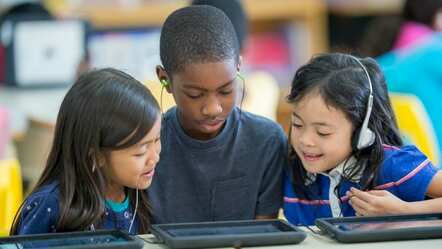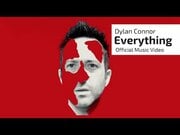New York, NY (Top40 Charts) Stumped with a student who doesn't seem to learn? Annoyed by little drum beats on the desk, loss of focus? Maybe the student is musical. Here's what to do.
There is a child in your classroom this year that you cannot connect with. You've analyzed your teaching techniques and made some adjustments, but this kid isn't getting it. S/he seems even more withdrawn and lost in a particular subject. It doesn't factor out. So as a free essay writer, I can state that you've made the correct assumption that this kid is smart, but still, s/he is not making progress in, let's say, language arts.
This article will help you determine if the child cannot relate to your teaching style simply because the two of you operate on different wavelengths and what to do about correcting the situation. With more information, a teacher can learn to identify and assist a child whose primary style is musical.
Identifying Learning Styles
We've all been instructed in the common theories of cognition during our pre-service experiences: the multiple intelligences, social learners, personalities that affect one's learning, etc., but have we been taught to explore the seemingly unusual learner, the one farthest from our learning style?
It's easy to detect a kinesthetic learner because the child has exemplary gross motor skills and will devote more eye contact to the way a teacher moves while instructing the class. S/he does well in sports and is exceptionally coordinated during recess. Consequently, this type of learner tends to attract friends easily since the other kids want to emulate that smoothness in social contacts.
It's also easy to spot a mathematical learner or a fluent reader who immediately uses seemingly inborn decoding skills to transfer written words into meaningful thought. Social learners sometimes get carried away with talking, but we as teachers understand that this is their style. We learn to make accommodations throughout the year for our students when we can identify their cognitive style to maximize learning. But how about when we can't identify a student's style?
They Didn't Tell Me This in College
If there is a child in the room as described in the opening paragraph that you just can't figure out, and you don't consider yourself particularly musical, it may very well be that it is because the student in question is a musical learner.
To determine if a child is musical is relatively easy. Here are some strategies to find out, which surprisingly were probably not pointed out in college, but are common sense once applied:
Listen for Kids to Sing or Whistle
They will almost always identify themselves to you as musical learners and will probably be very in tune with their age.
Try Putting on Some Soothing Instrumental Music
We're not going for the Mozart Effect, just a little cognitive detective work. Here's what you'll notice about the musical learners in your classroom--they will relax and focus on the material without realizing it. Start the music rather quietly, at a lower volume than you would listen to quiet music on the way to work. Gradually increase the volume little by little. It doesn't have to end up being very loud to have the desired effect. You can experiment with rhythmical genres, just don't go over the edge and get the class up dancing. There is some stealth to this method.
Watch the Student's Feet
Most musical kids will tap their feet unconsciously, particularly after coming in from recess or walking to class. Another more subtle observation is to walk at the back of your line when you take your class to specials, provided it is in a different room than yours. You will see the musical kids walking to a regular beat, and usually, they will lean rather heavily on each step even when there is no music to influence them. That is because it is going on in their head, all the time. They can't shake it loose. It's with them constantly.
Typical Development of the Musical Learner
What musical kids usually don't know about themselves from primary school until high school or in their early twenties is that the only way to get a song out of their head is to replace it with another. They can become overly involved with analyzing the music they hear, be able to repeat it back accurately after only one hearing, invent other music to go along with something already playing, and possess an amazing ability to compose music in their heads, long before they can write that music down in some kind of symbolic notation.
The trick to making your teaching style most effective is to be able to identify the musical kids in your class at the beginning of the year and to tap into their inborn talent to teach them other subjects. It is a very common thing to have a music teacher report that a child has pronounced ability in music class while the classroom teacher thinks the same child may never graduate.
Tips for Reaching the Musical Learner
Musical learners can learn to read, but you may have to get them up on their feet in the beginning stages. Just like all kids before age eight or nine, they too might exhibit a lack of coordination when doing an activity that crosses the center axis of the body. A musical child will learn to read faster with rhyming books or a style of writing that has even amounts of words in each paragraph or sentence. And, don't be surprised if the child reads sentences backwards. It may not be a learning disability like dyslexia; instead, it is the rapid firing of synapses that will over time transfer to the incredibly fast and proficient playing of an instrument such as the piano. The key to learning reading for all learners lies in their ability to move in a coordinated fashion, with a particularly strong connection to being able to skip.
Math
It is usually one of their strongest subjects since they tend to analyze the symbols. They can quickly conjure up a strong relationship between symbolic notation and concrete ideas. Once they make the connection, they never forget it.
Sports
Musical learners can learn to do well in sports, as long as patience is given to the preliminary learning of gross motor skills. Generally, their fine motor skills are well developed naturally. To teach gross motor skills, it is necessary to utilize rhythmic training such as beating on a drum or playing music to learn how to skip. Musicians in high school are overly protective of their digits, and view the potential jamming of a finger (while playing volleyball for example) as a hindrance to the study of their musical instrument and may attempt to avoid the whole process.
Rhythmical Pattern
Musical children crave balance in their bodies to promote symmetry. In other words, they will almost not be able to stop doing something on one side of their body that they just did on the other. For example, a musical child may absentmindedly tap his or her pencil in the right hand in a rhythmical pattern, and then have the need to switch the pencil over to the left hand to repeat the sequence, or alternate tapping of the right and left hands. This is very typical and stems from the need to complete a musical idea or phrase and not leave it hanging. It tends to annoy others, but it is such a compelling need that younger kids simply cannot help themselves. They will with time learn more self-control and be satisfied with completing the phrase in their mind. A good music teacher will be able to assist with this conversion of the action of playing and the internalization of it.
Clapping Pattern
When a musical kid loses focus, you can utilize a small clapping pattern that the class knows to imitate back to you, without having to single out a student. Rhythms and melody are central to the learning style of musical kids. They will have a hard time not repeating it back to you, so it has the optimum effect of being able to refocus during the learning process.
























